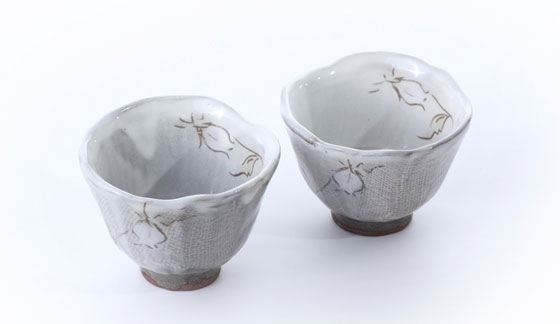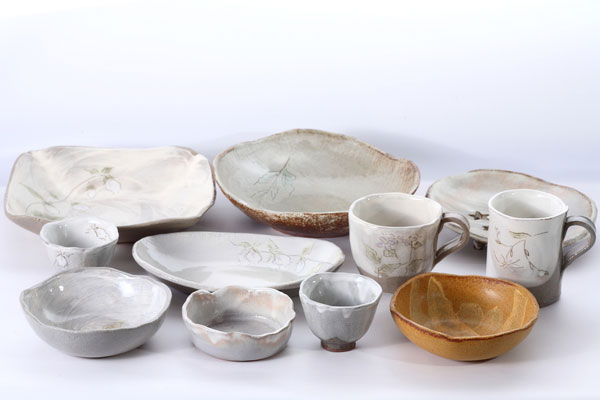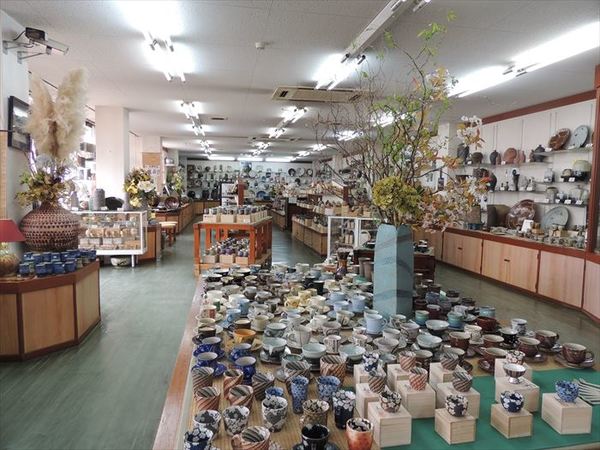
- Ceramic
- Tochigi
Mashiko ware Mashiko yaki
Familiar vessels for everyday use
that bring out the soil's feeling
Description
What is Mashiko ware ?
Mashiko ware (called Mashiko yaki in Japanese) is produced in the area around the town of Mashiko in Tochigi prefecture. The clay used in Mashiko ware is rich in silicic acid and iron with a high plasticity, making it easy to shape and highly fire-resistant. Unlike other potteries, no extra ingredients are added to the clay; which is the secret behind Mashiko ware's thickness. While the clay makes this pottery heavier than others and requires handling with care, there is a unique and rustic practicality to its thick clay texture. Mashiko ware's glazes are made with stone powder and scrap iron powder and the colors are laid on with dog-hair brushes. This creates a round look as well as adding depth to the colors. Mashiko ware is easy to glaze which enables artisans to use various traditional techniques, such as decorating with white engobe (clay slip coating) or brush marks, to create unique powerful pieces.
History

Mashiko ware was created at the end of the Edo period (1603-1868). It is considered to have started in 1853 when Keizaburo OTSUKA set up a Mashiko pottery business in the town of Mashiko. Otsuka had studied in Hitachi province, which is now the city of Kasama in Ibaraki prefecture. With support from Hitachi province, Mashiko ware was produced for everyday items like water jars and pots. The items were so popular in Mashiko that they were even used in Edo (Tokyo's former name).
During the Showa period (1912-1988), a man from Mashiko named Shoji HAMADA began to make vases and tableware. His goal was to develop the idea that using artwork makes it even more beautiful. People at the time were not used to that way of thinking but later came to recognize and enjoy that artwork can be used in daily life. His ideas influenced many young potters and helped make Mashiko ware what it is today.
In 1951, the Tochigi Prefecture Ceramics Land Industry Cooperative, now renamed Mashiko Ware Cooperative, was founded. In 1979, Mashiko ware was designated as a National Traditional Craft.
Mashiko also keeps on evolving as a pottery producing area and a pottery market is held in the spring and fall every year.
General Production Process
- 1. Mining the clay
The clay that is mined must be of the right plasticity to be used in Mashiko ware. It cannot be too sticky or too weak, or it will develop cracks as it dries or fail to maintain its shape during the biscuit firing.
The quality of the mined clay has a great influence on the quality of the final product. - 2. Elutriation This is the process of refining the mined clay so it can be used to make Mashiko ware. The clay is dried and pulverized. After that, it is put into a tank of water, where it is stirred, and any impurities like dirt or sand that come to the top are removed. What remains is transferred to another tank and allowed to settle; then it is dried again.
- 3. Kneading the clay
This process of kneading the clay, in addition to removing impurities and air bubbles, makes the clay easy to handle and mold on the potter's wheel.
Because the kneading or spiral wedging involves both large rough massaging and smaller careful massaging, the form of the clay ends up resembling a chrysanthemum while it is being kneaded hence its nickname, "chrysanthemum kneading".
Depending on the state of the clay, two types may be kneaded together to compensate for any defects.
After mixing, the clay is left to sit for several days in order to stabilize. - 4. Forming
Using a potter's wheel is the main way of forming Mashiko ware. After being formed, the pottery is dried in the sun until moderately hard, and then the shape is fine-tuned and finished by trimming on the wheel.
After the piece has undergone this process, it sits in the open air until it is sufficiently dry, completing the forming process.
A piece may also be formed by dye-molding, using plaster to make a mold and dispensing with the use of a potter's wheel, or by slab-building, using clay shaped into a flat slab. - 5. Biscuit firing
The biscuit firing is the first firing of the pieces. The pieces are fired in order to better absorb pigments and glaze and to strengthen the dried clay from becoming weak.
In many cases, the biscuit firing is done in the same kiln as glost firing but biscuit firing is done at a low temperature of between 700 and 800℃ (about 1292 to 1472℉).
If the clay has not sufficiently dried, it may break or crack. - 6. Underglaze painting / Glazing The pigments and glazes used on Mashiko ware contain metals like iron, copper, manganese, cobalt, and chrome, which undergo a chemical reaction when pieces are fired at a high temperature. The base of Mashiko ware glazes is a clear glaze consisting of feldspar material to which charcoal or coal and clay have been added. There are five main types of glazes, which used selectively, lend a unique quality to the product. There is an orangey red glaze which includes a natural red or yellow powder as well as a black glaze, and also a bran-white glaze which includes straw ash, wood ash, or rice bran ash. Some pieces of Mashiko ware are glazed after being decorated using a method called nurikake, which involves applying the glaze with a dog-hair brush.
- 7. Firing and unloading After the glazing comes the firing, which consists of baking the pieces in a kiln for 48 to 72 hours at 1200 to 1300℃ (about 2192 to 2372℉). This firing is called glost firing to distinguish it from biscuit firing. Wood was formerly used as the fuel for firing, but more recently gas kilns have come into wide use. Oxidation firing is increasing the amount of oxygen, while reduction firing is reducing oxygen for a period of time, and the results of the firing are different depending on the type of firing. The pieces are then unloaded after cooling for about two days.
Where to Buy & More Information
Mashikoyaki Kamamoto Kyohan Center
 photo:Mashikoyaki Kamamoto Kyohan Center
photo:Mashikoyaki Kamamoto Kyohan Center
-
Address
-
Tel.+81-285-72-4444
-
ClosedDecember 30 to January 1
-
Business Hours10am to 4pm
-
Website
See more Ceramic
- Imari ware/Arita ware
- Hasami ware
- Kutani ware
- Mashiko ware
- Shigaraki ware
- Bizen ware
- Hagi ware
- Koishiwara ware
- Mino ware
- Tobe ware
- Tokoname ware
- Karatsu ware
- Kasama ware
- Satsuma ware
- Iga ware
- Mikawachi ware
- Agano ware
- Otani ware
- Obori-soma ware
- Tsuboya ware
- Aizu-hongo ware
- Shodai ware
- Echizen ware
- Akazu ware
- Tamba-tachikui ware
- Yokkaichi-banko ware
- Izushi ware
- Kyo ware/Kiyomizu ware
- Iwami ware
- Amakusa ceramics
- Seto-sometsuke ware
- Sanshu Onigawara Crafts































































































































































































































































































